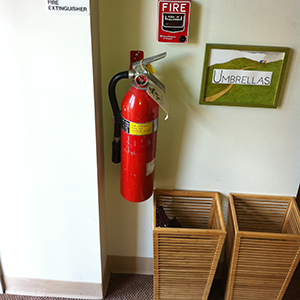Hazard Communication Plan Explained
More than 30 million workers in the United States are potentially exposed to one or more chemical hazards. There are an estimated 650,000 existing hazardous chemical products, and hundreds of new ones are being introduced annually. This poses a serious problem for exposed workers and their employers.
The Hazard Communication Standard (HCS) is now aligned with the Globally Harmonized System of Classification and Labeling of Chemicals (GHS). This update to the Hazard Communication Standard (HCS) will provide a common and coherent approach to classifying chemicals and communicating hazard information on labels and safety data sheets. This update will also help reduce trade barriers and result in productivity improvements for American businesses that regularly handle, store, and use hazardous chemicals while providing cost savings for American businesses that periodically update safety data sheets and labels for chemicals covered under the hazard communication standard.
How does the OSHA Hazard Communication Standard effect your business? Well first let’s take a look at what OSHA sets as some standards.
The OSHA Hazard Communication Standard (HCS) – 29 CFR 1910.1200 provides workers exposed to hazardous chemicals with the identities and hazards of those materials,
From OSHA.gov
Hazard Communication Standard
In order to ensure chemical safety in the workplace, information about the identities and hazards of the chemicals must be available and understandable to workers. OSHA’s Hazard Communication Standard (HCS) requires the development and dissemination of such information:
-
All employers with hazardous chemicals in their workplaces must have labels and safety data sheets for their exposed workers, and train them to handle the chemicals appropriately.
So you read this and say to yourself, “I don’t deal in hazardous chemicals”. But if you have things like cleaning chemicals, that employees or the public can handle, then you need to comply with OSHA’s Hazard Communication Standard. Employees need to be familiar with OSHA’s hazard communication standards to help save lives and avoid OSHA citations.
Purpose of the HAZCOM standard
The purpose of the HCS 2012 is to make sure that:
- the hazards of all chemicals produced or imported are classified, and
- information about the classified hazards is transmitted to employers and employees.
Classifying the potential hazards of chemicals, and communicating information concerning hazards and appropriate protective measures to employees, may include:
 developing and maintaining a written hazard communication program
developing and maintaining a written hazard communication program- listing hazardous chemicals present
- labeling containers of chemicals in the workplace
- labeling containers of chemicals being shipped to other workplaces
- preparing and distributing SDSs to employees and downstream employers
- developing and implementing employee training programs
The HCS 2012 applies to any chemical which is known to be present in the workplace in such a manner that employees may be exposed under normal conditions of use or in a foreseeable emergency.
“Foreseeable emergency” means any potential occurrence such as, but not limited to, equipment failure, rupture of containers, or failure of control equipment which could result in an uncontrolled release of a hazardous chemical into the workplace.
The phrase “known to be present” is important. If a hazardous chemical is known to be present by the chemical manufacturer or the employer, it is covered by the standard.
Check Out: How to Read an SDS Sheet
This includes not using generic, unlabeled cleaners, or buying cleaners in bulk and putting them in unlabeled bottles. Using a marker on the bottle isn’t enough either.
“Hazardous chemical” means any chemical which is classified as a physical hazard or a health hazard, a simple asphyxiant, combustible dust, pyrophoric gas, or hazard not otherwise classified.
This includes chemicals to which employees may be exposed during normal operations or in a foreseeable emergency. This means that even though an employer was not responsible for the manufacture of the hazardous chemical, the employer has the responsibility for transmitting information about the hazardous chemical to his or her employees.
OSHA Definitions of Chemical Hazards
Do not think that the chemicals which apply to the rule are only those in liquid, gas or particulate form. But, the standard’s definition of “chemical” is much broader than that commonly used. According to the HCS, chemicals that apply may exist in one of many forms:
- Dusts – are finely divided particles. Example – wood dust.
- Fumes – are even smaller particles usually formed when solid metal is heated and vaporized, and then condenses as tiny particles.
- Fibers – are similar to dusts but are of an elongated shape. Examples – asbestos and fiberglass.
- Mists – are liquid droplets that have been sprayed into the atmosphere.
- Vapors – are gases formed when liquid evaporates.
- Gases – are substances that are normally airborne at room temperature. A vapor is the gaseous phase of a substance which is a normally a liquid or solid at room temperature.
- Solids – such as metal, treated wood, plastic.
- Liquids – the most common form in the workplace.
Chemical Effects
The effects chemicals have on the various organs of the human body depend on several important factors:
- The form of the chemical: Is the chemical a solid, liquid, or gas?
- The route of entry, or how the chemical contacts the body: is it ingested, inhaled, absorbed or injected?
- The dose, or amount, the body receives: How much chemical makes its way into the body?
- The toxicity: How poisonous is the chemical?
Routes of Entry
Another important task when assessing the workplace for chemical hazards is to determine the route(s) of entry the chemicals may take. If we know the route(s) of entry, we can then determine appropriate engineering, administrative, and PPE controls to eliminate or reduce the exposure. The four common routes of entry are:
- Ingestion: Do we eat or drink it?
- Inhalation: Do we breathe it in? This is the most common route of entry.
- Absorption: Does it pass through the skin, eyes or other membranes?
- Injection: Does it enter through a puncture or cut?
Check Out: Hazard Communication Standard Training for Supervisors
Employees, such as office workers or bank tellers who encounter hazardous chemicals only in non-routine, isolated instances are not covered. For example, an office worker who occasionally changes the toner in a copying machine would not be covered by the standard. However, an employee who operates a copying machine as part of her/his work duties would be covered by the HAZCOM Standard.
Do you have all SDS sheets and a chemical listing of chemicals onsite, that is available to all employees, not locked in a drawer in a back office. Online access is acceptable, as long as all employees know how to get it and have access to a computer.
Employer Responsibilities
SDSs may be kept at the primary workplace facility or online, as long as the employer can ensure employees have quick access to the information.
- Employers must obtain a SDS from the chemical manufacturer or importer as soon as possible if the SDS is not provided with a shipment that has been labeled as a hazardous chemical.
- Employers must maintain SDSs in their workplace and must ensure that they are readily accessible during each work shift to employees when they are in their work area(s).
- Electronic access and other alternatives to maintaining paper copies of the SDS are permitted as long as no barriers to immediate employee access in each workplace are created by such options. Make sure employees know how to quickly access SDS information that is stored on computers or online.
- Where employees must travel between workplaces during a workshift, i.e., their work is carried out at more than one geographical location, the SDSs may be kept at the primary workplace facility. In this situation, the employer must ensure that employees can immediately obtain the required information in an emergency.
- Employees who work at more than one site during the work shift must be able to obtain SDS information immediately (within seconds) in an emergency.
- SDSs may be kept at the primary workplace facility, as long as the employer has a representative available at all times to ensure ready access (within a few minutes) to this information. This is the only situation in which an employer is allowed to transmit hazard information via voice communication. The employer must address in the written hazard communication plan how SDS information will be conveyed to remote worksites.
- SDSs may be kept in any form, including operating procedures, and may be designed to cover groups of hazardous chemicals in a work area where it may be more appropriate to address the hazards of a process rather than individual hazardous chemicals.
Have you conducted employee awareness training on how to read an SDS sheet?
Download and view a sample HAZCOM policy below; that can be adapted for your needs, but remember a small business owner might find a full and proper Hazard Communication Plan to be overwhelming to fully and properly design.
Sample_HAZCOM_program_final
























